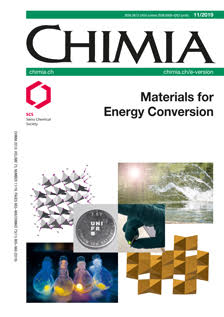[Coᴵᴵ(BPyPy₂COH)(OH₂)₂]²⁺: A Catalytic Pourbaix Diagram and AIMD Simulations on Four Key Intermediates
DOI:
https://doi.org/10.2533/chimia.2019.906PMID:
31753071Keywords:
Ab initio molecular dynamics, Cobalt polypyridyl, Density functional theory, Pourbaix diagram, Proton coupled electron transferAbstract
Proton reduction by [CoII(BPyPy2COH)(OH2)2]2+ (BPyPy2COH = [2,2'-bipyridin]-6-yl-di[pyridin-2-yl]methanol) proceeds through two distinct, pH-dependent pathways involving proton-coupled electron transfer (PCET), reduction and protonation steps. In this account we give an overview of the key mechanistic aspects in aqueous solution from pH 3 to 10, based on electrochemical data, time-resolved spectroscopy and ab initio molecular dynamics simulations of the key catalytic intermediates. In the acidic pH branch, a PCET to give a CoIII hydride is followed by a reduction and a protonation step, to close the catalytic cycle. At elevated pH, a reduction to CoI is observed, followed by a PCET to a CoII hydride, and the catalytic cycle is closed by a slow protonation step. In our simulation, both CoI and CoII–H feature a strong interaction with the surrounding solvent via hydrogen bonding, which is expected to foster the following catalytic step.
Downloads
Published
Issue
Section
License
Copyright (c) 2019 Swiss Chemical Society

This work is licensed under a Creative Commons Attribution-NonCommercial 4.0 International License.







